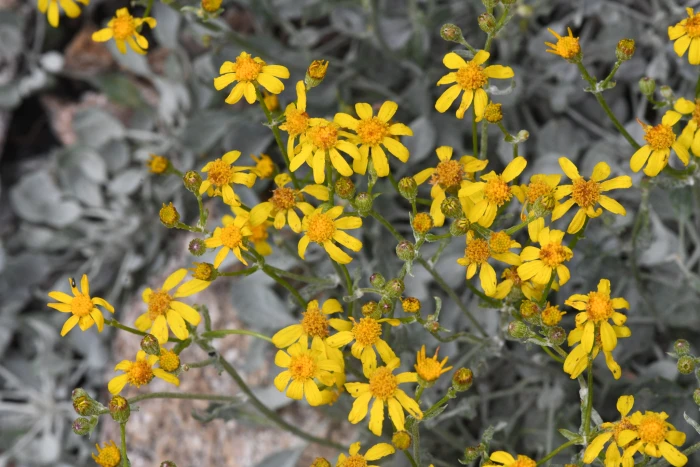Woolly Groundsel
(Packera cana)
Woolly Groundsel (Packera cana)
/
/

© Chloe and Trevor Van Loon
CC BY 4.0
Image By:
© Chloe and Trevor Van Loon
Recorded By:
Copyright:
CC BY 4.0
Copyright Notice:
Photo by: © Chloe and Trevor Van Loon | License Type: CC BY 4.0 | License URL: http://creativecommons.org/licenses/by/4.0/ | Uploader: chloe_and_trevor | Publisher: iNaturalist |

























Estimated Native Range
Climate Requirements for Fountain Valley, California
| This Plant | Your Site | Plant Suitability for Your Location | ||
|---|---|---|---|---|
| • Precipitation | 7" - 111" | 13" | Your precipitation may be insufficient for this plant. Irrigate N" / year. | Irrigate N" / year |
| • High Temp. | 57°F - 94°F | 82°F | Your summer temperatures are normal for this plant. | Excellent |
| • Low Temp. | -22°F - 37°F | 45°F | OK, but your winter temperatures are warmer than normal for this plant | OK |
This plant should grow well at your location with about N inches per year (Y minutes per month) of irrigation.
Summary
Packera cana, commonly known as Woolly Groundsel, is a perennial herb that is native to the mountainous regions of western North America, particularly in alpine meadows, rocky slopes, and subalpine zones. It typically grows to about 16 inches (40 cm) in height and is characterized by its woolly, whitish hairs that cover the stems and lance-shaped basal leaves, which help to insulate the plant in its cold native habitats. The inflorescence is a corymb of several flower heads, each with golden yellow disc florets surrounded by 8 to 13 narrow yellow ray florets, blooming from late spring to early summer. The flowers are modest in size but can be quite showy when in large numbers. The fruit is an achene with a pappus of bristles, aiding in wind dispersal.
Woolly Groundsel is valued for its ability to thrive in challenging mountainous conditions and is often used in rock gardens, alpine collections, and native plant landscapes. It is appreciated for its low maintenance requirements, tolerance of poor soils, and resistance to pests and diseases. It requires well-drained soil, moderate water, and full sun to partial shade. While not commonly found in cultivation, it can be a unique addition to gardens that mimic its native alpine conditions.CC BY-SA 4.0
Woolly Groundsel is valued for its ability to thrive in challenging mountainous conditions and is often used in rock gardens, alpine collections, and native plant landscapes. It is appreciated for its low maintenance requirements, tolerance of poor soils, and resistance to pests and diseases. It requires well-drained soil, moderate water, and full sun to partial shade. While not commonly found in cultivation, it can be a unique addition to gardens that mimic its native alpine conditions.CC BY-SA 4.0
Plant Description
- Plant Type: Shrub, Herb
- Height: 1.5-3 feet
- Width: 1-2 feet
- Growth Rate: Moderate
- Flower Color: Yellow
- Flowering Season: Spring, Summer
- Leaf Retention: Deciduous, Semi-deciduous
Growth Requirements
- Sun: Full Sun, Part Shade
- Water: Low
- Drainage: Fast, Medium, Slow
Common Uses
Butterfly Garden, Low Maintenance, Rock Garden, Showy Flowers
Natural Habitat
native to the mountainous regions of western North America, particularly in alpine meadows, rocky slopes, and subalpine zones
Other Names
Common Names: Woolly Ragwort, Silvery Groundsel, Gray Ragwort
Scientific Names: Packera cana, Packera cana f. cana, Packera cana f. eradiata, Senecio canus, Senecio canus var. acraeus, Senecio canus var. canus, Senecio canus var. celsus, Senecio canus var. eradiatus, Senecio canus var. purshianus
GBIF Accepted Name: Packera cana